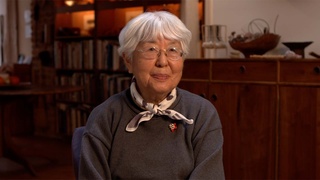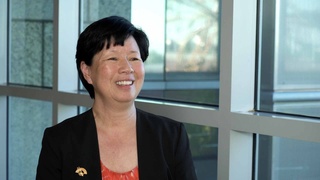Interviews
522nd and Dachau
And sometimes, you’d see a pile of snow and there’s somebody dead underneath the…you know. That’s…the concentration camp. [Clears throat.] And I know that one of the guys said that, that um, he heard a noise. And their group, someone sent…taken down into a valley, and are being been shot. And he had…he was so tired, he was just been lyin’ down. And so, uh, the Germans had to leave because we were moving pretty fast on them. So they left and he was alive, yeah. And, but he was covered up with snow. Which kept him warm all night. And then he heard a noise next morning and he woke up and he saw a truck. It was one of our guys. And the truck was on a hill. And the guy got out, he said, and he saw him walking toward him. And as he walked toward him, he said he thought he was gonna be shot again. And, uh, but he said the guy reached into his pocket and pulled out a candy bar. And gave to him. He said the first time a soldier had ever given him a candy bar to eat. And it was the full four…the 522nd artillery battalion of the 442nd.
Date: February 12, 2013
Location: California, US
Interviewer: Duncan Williams
Contributed by: Watase Media Arts Center, Japanese American National Museum with support of NITTO Tires Life History Project. Courtesy of the USC Hapa Japan Database Project.
Explore More Videos

The riot in Manzanar
(b. 1921) Nisei veteran who served in the occupation of Japan

The Dopey bank that survived the war
(b. 1934) Award-winning Disney animation artist who was incarcerated at Topaz during WWII

Evacuated to the Jungle
(b. 1938) Philipines-born hikiagesha who later migrated to the United States.

Captured by Guerillas after bombing of Pearl Harbor
(b. 1938) Philipines-born hikiagesha who later migrated to the United States.

Grandfather picked up by US Army
(b. 1952) Former banking executive, born in Hawaii

Father's business partner operated their farming business during WWII
(b. 1935) Sansei businessman.

Father was convinced the constitution would protect him
(b. 1935) Sansei businessman.

The lack of discussion about family’s incarceration in Amache
Sansei judge for the Superior Court of Los Angeles County in California


Her brother’s reasons as a No-No Boy
(b. 1923) Japanese American poet, activist

Her grandfather was pressured to teach Japanese
Sansei judge on the Superior Court of Los Angeles County in California

Neighbor took care of her mother after grandfather was taken by FBI
Sansei judge on the Superior Court of Los Angeles County in California

Immediately after the bombing
(b. 1938) Japanese American. Hiroshima atomic bomb survivor

Other family members not as lucky
(b. 1938) Japanese American. Hiroshima atomic bomb survivor

His parents had little hope that he had survived the atomic bomb
(b. 1938) Japanese American. Hiroshima atomic bomb survivor
